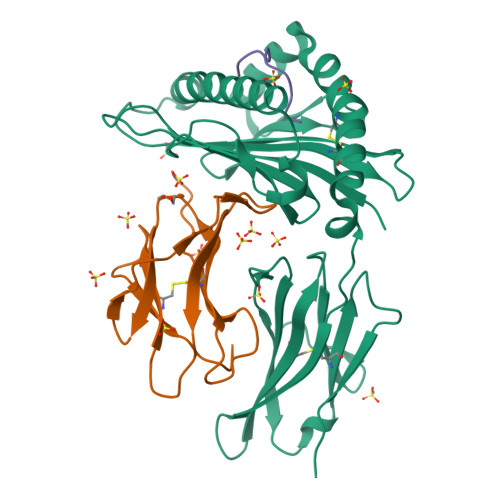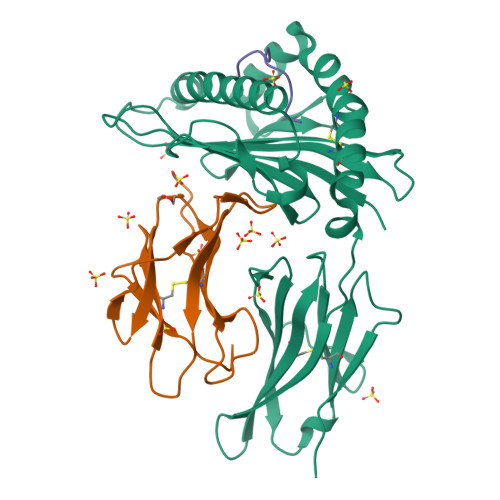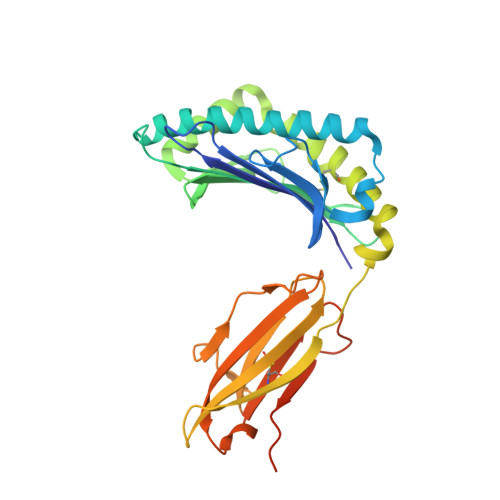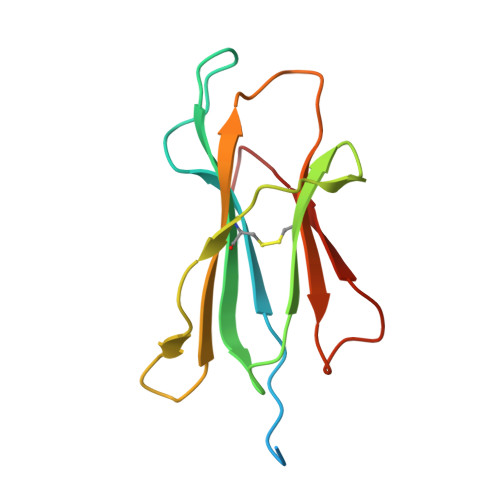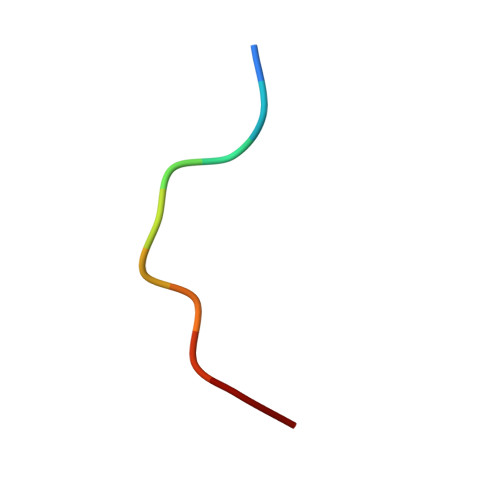Hydrophobic interactions dominate the recognition of a KRAS G12V neoantigen.
Wright, K.M., DiNapoli, S.R., Miller, M.S., Aitana Azurmendi, P., Zhao, X., Yu, Z., Chakrabarti, M., Shi, W., Douglass, J., Hwang, M.S., Hsiue, E.H., Mog, B.J., Pearlman, A.H., Paul, S., Konig, M.F., Pardoll, D.M., Bettegowda, C., Papadopoulos, N., Kinzler, K.W., Vogelstein, B., Zhou, S., Gabelli, S.B.(2023) Nat Commun 14: 5063-5063
- PubMed: 37604828
- DOI: https://doi.org/10.1038/s41467-023-40821-w
- Primary Citation of Related Structures:
7STF, 8DVG - PubMed Abstract:
Specificity remains a major challenge to current therapeutic strategies for cancer. Mutation associated neoantigens (MANAs) are products of genetic alterations, making them highly specific therapeutic targets. MANAs are HLA-presented (pHLA) peptides derived from intracellular mutant proteins that are otherwise inaccessible to antibody-based therapeutics. Here, we describe the cryo-EM structure of an antibody-MANA pHLA complex. Specifically, we determine a TCR mimic (TCRm) antibody bound to its MANA target, the KRAS G12V peptide presented by HLA-A*03:01. Hydrophobic residues appear to account for the specificity of the mutant G12V residue. We also determine the structure of the wild-type G12 peptide bound to HLA-A*03:01, using X-ray crystallography. Based on these structures, we perform screens to validate the key residues required for peptide specificity. These experiments led us to a model for discrimination between the mutant and the wild-type peptides presented on HLA-A*03:01 based exclusively on hydrophobic interactions.
Organizational Affiliation:
Department of Biophysics and Biophysical Chemistry, The Johns Hopkins School of Medicine, Baltimore, MD, 21205, USA.








